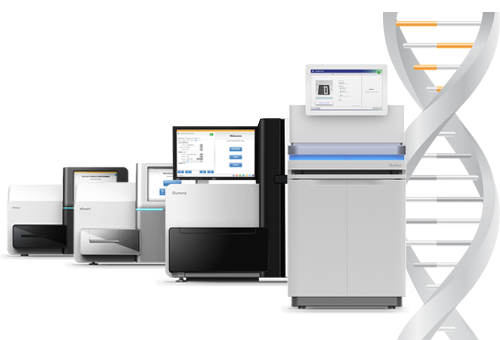History of Illumina Sequencing
Evolution of Illumina Sequencing
What began as “blue-sky” research in the chemistry department of Cambridge University evolved into the revolutionary sequencing by synthesis (SBS) technology that is the foundation of Illumina sequencing instruments.
History of SBS and Solexa
Mid-1990s
Evolution of a Novel Approach to Sequencing
In the mid-1990s, Cambridge scientists Shankar Balasubramanian, Ph.D. and David Klenerman, Ph.D. were using fluorescently labeled nucleotides to observe the motion of a polymerase at the single molecule level as it synthesized DNA immobilized to a surface.
The contributions of Cambridge scientists to the first draft of the human genome, and the University’s rich history of DNA research by Alexander Todd, James Watson, Francis Crick, and Fred Sanger, inspired Drs. Balasubramanian and Klenerman to theorize how this approach might be used to sequence DNA.
A series of creative discussions in the lab and at a local pub during the summer of 1997 sparked ideas surrounding the use of clonal arrays and massively parallel sequencing of short reads using solid phase sequencing by reversible terminators.
This technology was subsequently referred to as sequencing by synthesis, or SBS. This became the basis of an innovative DNA sequencing approach.
1998
Formation of Solexa
Balasubramanian and Klenerman approached the venture capital firm Abingworth Management and obtained initial seed funding to form Solexa in 1998. Early research and development work was conducted in the Cambridge Chemistry Department until 2000, when Solexa’s corporate facilities were established at Chesterford Research Park.
2004
Molecular Clustering Technology Integration
In 2001, the Solexa team’s research progress attracted £12 million in Series A funding, enabling it to build its management team. Three years later, Solexa acquired molecular clustering technology from Manteia. The amplification of single DNA molecules into clusters enhanced the fidelity and accuracy of gene calling, while reducing the cost of the system optics through generation of a stronger signal.
2005
phiX-174 Genome Sequencing
The Solexa team sequenced the complete genome of the bacteriophage phiX-174, the same genome Sanger first sequenced using his method. However, the SBS technology generated significantly more sequencing data, delivering over 3 million bases from a single run.
2005
Integration of Lynx Therapeutics
In 2005, Solexa acquired instrumentation company Lynx Therapeutics in a reverse merger, becoming an international public company (NASDAQ) with offices in Chesterford, UK and Hayward, CA. Engineering and software production teams based in Hayward immediately went to work transforming the successful Solexa prototype into a commercial sequencing instrument.
2006
Genome Analyzer Launches
The first Solexa sequencer, the Genome Analyzer, was launched in 2006 and gave scientists the power to sequence 1 gigabase (Gb) of data in a single run.
2007
Illumina Acquires Solexa
Solexa was acquired by Illumina in early 2007. In the intervening years, numerous microbe, plant, human, and animal genomes have been sequenced with this technology. Next-generation sequencing (NGS) data output has increased at a rate that outpaces Moore's law, more than doubling each year.

Latest SBS Breakthroughs
Find out more about how Illumina SBS works, and explore groundbreaking advances in SBS chemistry.
Learn More About SBSRelated Content
- Interview with Dr. Colin Barnes: This Solexa co-founder is a named inventor on over 50 European and US patents relating to his work at Solexa and Illumina. He discusses the early days of sequencing technology.
- Illumina Research and Innovation: Explore the latest discoveries and innovations by Illumina scientists.
Additional Information
- Illumina Sequencing Platforms: Through refinements and optimization, the latest generation of Illumina SBS-based instruments can generate multiple terabases (Tb) of data per run.
- Sequencing: Ask virtually any question related to the genome, transcriptome, or epigenome of any organism.
- Bioinformatics Tools: Explore user-friendly tools that facilitate genomic data analysis and management.
